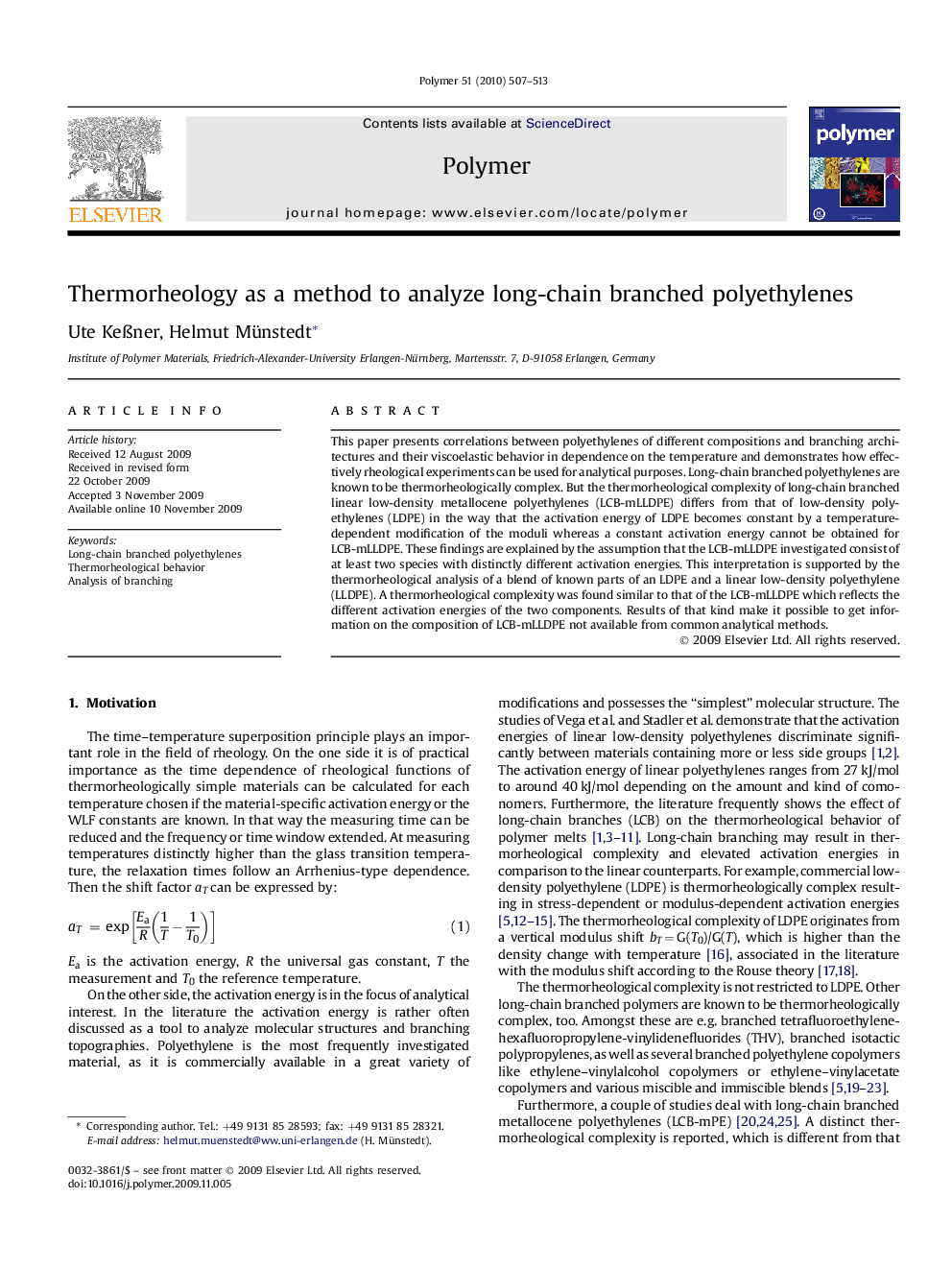| Article ID | Journal | Published Year | Pages | File Type |
|---|---|---|---|---|
| 5185355 | Polymer | 2010 | 7 Pages |
This paper presents correlations between polyethylenes of different compositions and branching architectures and their viscoelastic behavior in dependence on the temperature and demonstrates how effectively rheological experiments can be used for analytical purposes. Long-chain branched polyethylenes are known to be thermorheologically complex. But the thermorheological complexity of long-chain branched linear low-density metallocene polyethylenes (LCB-mLLDPE) differs from that of low-density polyethylenes (LDPE) in the way that the activation energy of LDPE becomes constant by a temperature-dependent modification of the moduli whereas a constant activation energy cannot be obtained for LCB-mLLDPE. These findings are explained by the assumption that the LCB-mLLDPE investigated consist of at least two species with distinctly different activation energies. This interpretation is supported by the thermorheological analysis of a blend of known parts of an LDPE and a linear low-density polyethylene (LLDPE). A thermorheological complexity was found similar to that of the LCB-mLLDPE which reflects the different activation energies of the two components. Results of that kind make it possible to get information on the composition of LCB-mLLDPE not available from common analytical methods.
Graphical abstractDownload full-size image
